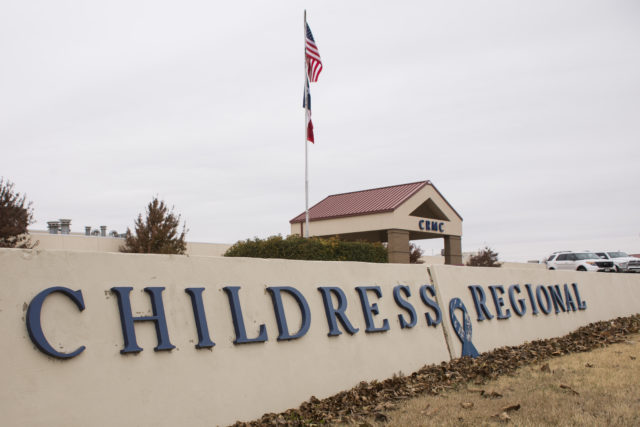
Allegheny Memorial Hospital.
By MICHELLE ANDREWS
For Kaiser Health News
A few years ago, when a young woman delivered her baby at Alleghany Memorial Hospital, in Sparta, N.C., it was in the middle of a Valentine’s Day ice storm and the mountain roads out of town were impassable. The delivery was routine, but the baby girl had trouble breathing because her lungs weren’t fully developed. Dr. Maureen Murphy, the family physician who delivered her that night, stayed in touch with the neonatal intensive-care unit at Wake Forest Baptist Medical Center, in Winston-Salem, N.C., a 90-minute drive away, to consult on treatment for the infant.
“It was kind of scary for a while,” Murphy remembered. But with Murphy and two other family physicians trained in obstetrics as well as experienced nurses staffing the 25-bed hospital’s labor and delivery unit, the situation was manageable, and both mother and baby were fine.
 Things are different now. Alleghany hospital — like a growing number of rural hospitals — has shuttered its labor and delivery unit, and pregnant women have to travel either to Winston-Salem or to Galax, Va., about 30 minutes away by car, weather permitting.
Things are different now. Alleghany hospital — like a growing number of rural hospitals — has shuttered its labor and delivery unit, and pregnant women have to travel either to Winston-Salem or to Galax, Va., about 30 minutes away by car, weather permitting.
“It’s a long drive for prenatal care visits, and if they have a fast labor” it could be problematic, said Murphy, who teaches at the Cabarrus Family Medicine Residency Program, in Concord, N.C. (Although not essential, women typically see the physician they expect will handle their delivery for prenatal care.)
About 500,000 women give birth each year in rural hospitals, yet access to labor and delivery units has been declining. Comprehensive figures are spotty, but an analysis of 306 rural hospitals in nine states with large rural populations found that 7.2 percent closed their obstetrics units between 2010 and 2014.
“The fact that closures continue happening — over time that means the nearest hospital gets further and further away,” said Katy Kozhimannil, an associate professor at the University of Minnesota School of Public Health, who co-authored the study published in the January issue of Health Services Research.
There are many factors that contribute to the decline in rural hospital obstetrics services. For one thing, obstetrics units are expensive to operate, and a small rural hospital may deliver fewer than 100 babies a year.
“A labor and delivery unit is functionally no different than an intensive care unit,” said Dr. Neel Shah, an assistant professor of obstetrics, gynecology and reproductive biology at the Harvard Medical School. Staffing levels are high in obstetrics, often one nurse for every patient, and the rooms are cluttered with monitors, infusion pumps and other equipment.
It can be difficult to staff the units as well. Small rural hospitals may not have obstetricians on staff and rely instead on local family physicians, but it can be difficult to get enough to fully provide services for a hospital, too. Nurses with obstetrics experience also can be scarce.
Meanwhile, bringing in the revenue needed to cover the costs involved in maintaining the units can be difficult because insurance payments are often low. Medicaid pays for slightly under half of all births in the United States, but in rural areas the proportion is often higher, said Kozhimannil. Since Medicaid pays about half as much as private insurance for childbirth, “the financial aspect of keeping a labor and delivery unit open is harder in rural areas,” she said.
Advocates say there are a number of initiatives that could help bolster labor and delivery services in rural areas.
Encouraging medical professionals to move to rural areas is key, they say. A bipartisan bill introduced in Congress last year, for example, would require the federal government to designate maternity care health professional shortage areas. Such designations exist for primary care, mental health and dental care. The National Health Services Corps awards scholarships and provides loan repayment to primary-care providers who commit to serving for at least two years in designated shortage area. Once they get to a community and put down some roots, the hope is they’ll stay.
Expanding the use of midwives and birthing centers could be cost effective since they are generally less expensive than physicians and hospital obstetric units. Although birthing centers and home births are on the rise, more than 98 percent of the 4 million babies that were born in 2014 made their arrival at a hospital.
“You can deal with lower volume and still be sustainable,” said Shah.
“Finding strength in numbers, small rural hospitals are increasingly banding together to share resources, said Kozhimannil. For example, since it’s difficult to keep rural staff trained in rare complications, small rural hospitals sometimes pool resources to buy a mobile simulation unit to train people on handling postpartum hemorrhage, the leading cause of maternal mortality.
Kozhimannil sees great opportunity in the ongoing national dialogue about health reform but says much of the research to date has focused on reforming health care in urban settings.
“That’s why it’s crucial to have rural people at the table,” she said









 Things are different now. Alleghany hospital — like a growing number of rural hospitals — has shuttered its labor and delivery unit, and pregnant women have to travel either to Winston-Salem or to Galax, Va., about 30 minutes away by car, weather permitting.
Things are different now. Alleghany hospital — like a growing number of rural hospitals — has shuttered its labor and delivery unit, and pregnant women have to travel either to Winston-Salem or to Galax, Va., about 30 minutes away by car, weather permitting.


